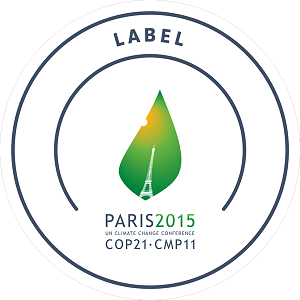COP 21 was a climate conference in Paris which occurred at
the start of December 2015, in an aim to achieve a legally binding and
universal agreement on climate, with the main goal of keeping global warming
below 2oC (COP21 2015). 196 countries attended this conference and have agreed in
principle to limit the rise in global temperatures to below 2oC by
2100 (IAEA 2015). As nuclear isn’t a renewable energy, it has normally not played a
large roll in these type of talks, so did nuclear play a big role in COP 21?
 |
| COP21 Logo (COP21 2015) |
In reality, nuclear energy was more of side-show compared to
the main talking points. Even though the conference was held in France, which
produces roughly 75% of its electricity through nuclear power, it just wasn’t a
main focus (France 24 2015). Many groups state that Nuclear energy has to be part of the
solution; it’s a mature technology, its barriers are more political and social
than anything else, and is the second largest producer of low carbon-energy in
the world behind hydro (Forbes 2015). The IEA projects
that global nuclear energy production must increase from 400GW to 1000GW by
2050 to have any chance of reaching emission reduction goals, which also
factors in wind and solar both producing 2000GW each by then (Forbes 2015).
So if nuclear appears to be so crucial, why wasn’t it discussed?
A number of factors play a crucial role in this. Nuclear has high initial
start-up costs, which puts it out of reach for many 3rd world
countries when there are cheaper alternatives available (rfi 2015). Another big factor is
the negative image that nuclear power has, which is partly due to the fact the
media repeatedly portrays old, incorrect facts, and the other being that when a
nuclear disaster occurs, it’s quite a big event. However nuclear waste
problems have a number of long term solutions, they have carbon emissions as
low as wind, life-cycle costs as low as natural gas, and are statistically the
safest major form of power production (Forbes 2015) (Adamantiades & Kessides 2009). It is the perceived danger, albeit it is
not devoid of any, which prevents any real commitment to the sector.
 |
| Fatalities associated with full energy chains (Adamantiades & Kessides 2009) |
So did nuclear play any role in COP21?! Well it did
actually. Many countries such as China, India and Argentina, have included it
in their mitigation portfolios (IAEA 2015). This means that Nuclear energy is seen as a
low-carbon option and a number of countries have specifically chosen it to be a
key part of its strategy going forward. With many seeing that renewables have
not advanced enough in the past decade of investment, (wind, solar, geothermal
and biomass only produce 2% of global electricity together) and the fact a
number of them are not 24/7 sources of energy, perhaps more countries will turn
to Nuclear as part of their strategy to commit to the agreement signed during
COP21 (Forbes 2015) (Independent 2015)?
No comments:
Post a Comment